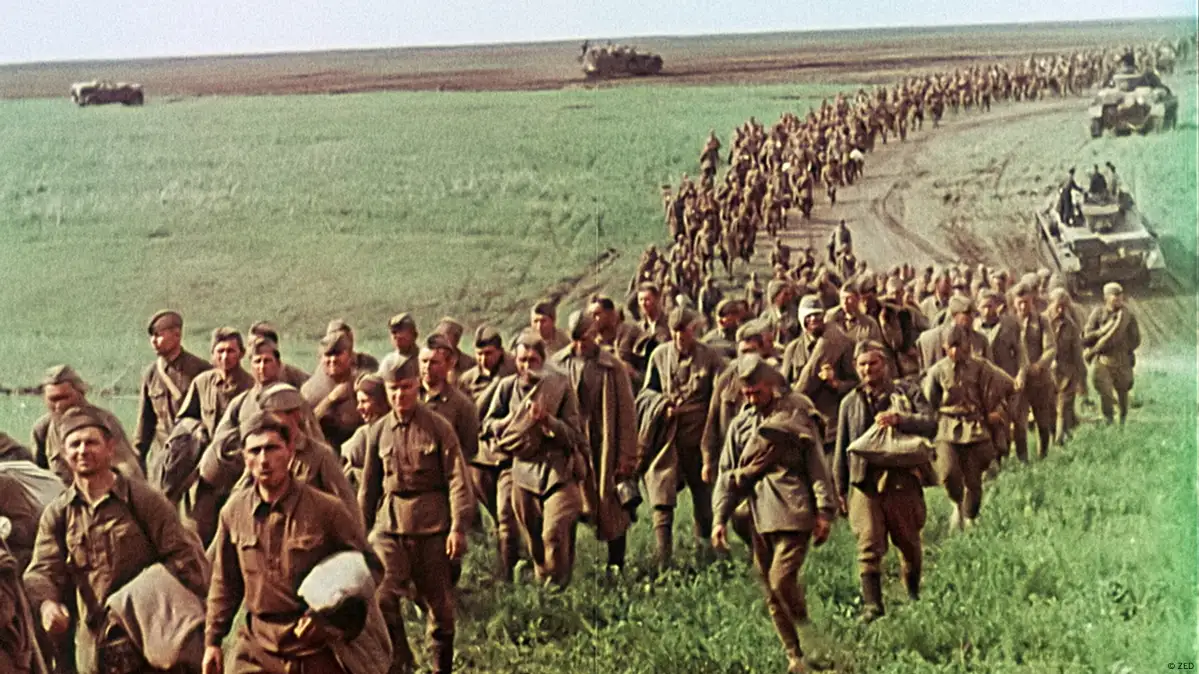Operation Barbarossa: War of annihilation — part 2

This browser does not support the video element.
Under the code name Operation Typhoon, the ‘final battle’ began - a desperate fight for the Soviet capital. The Vyazma-Bryansk double battle was aimed at crushing Red Army units around Moscow before conquering the city itself. Initially, the Wehrmacht managed to encircle and wear down the Soviet defenders. However, rain and mud then brought the German advance to a standstill. When frost set in after a good two weeks, troops were back on the move and the battle for Moscow could begin.
Thousands of civilians were drafted in to bolster defenses around the metropolis. Then Stalin ordered the evacuation of the city on 16 October. Panic and looting ensued. Three days later, a state of siege was declared and martial law was imposed. Despite major supply problems, a new German offensive was launched in mid-November, which ultimately failed.
By the spring of 1942, Soviet troops were able to regain large parts of territory lost to the Germans. The German defeat at Stalingrad in 1943 is also regarded as a decisive turning point in the conflict. Thereafter, the German front never recovered and entered a period of inexorable decline. Despite a desperate propaganda push, including a speech by Hitler’s propaganda minister Joseph Goebbels calling for ‘total war’, the German people had started to lose faith and doubt their nation’s victory prospects. Operation Barbarossa failed and ultimately led to Germany's unconditional surrender in May 1945.